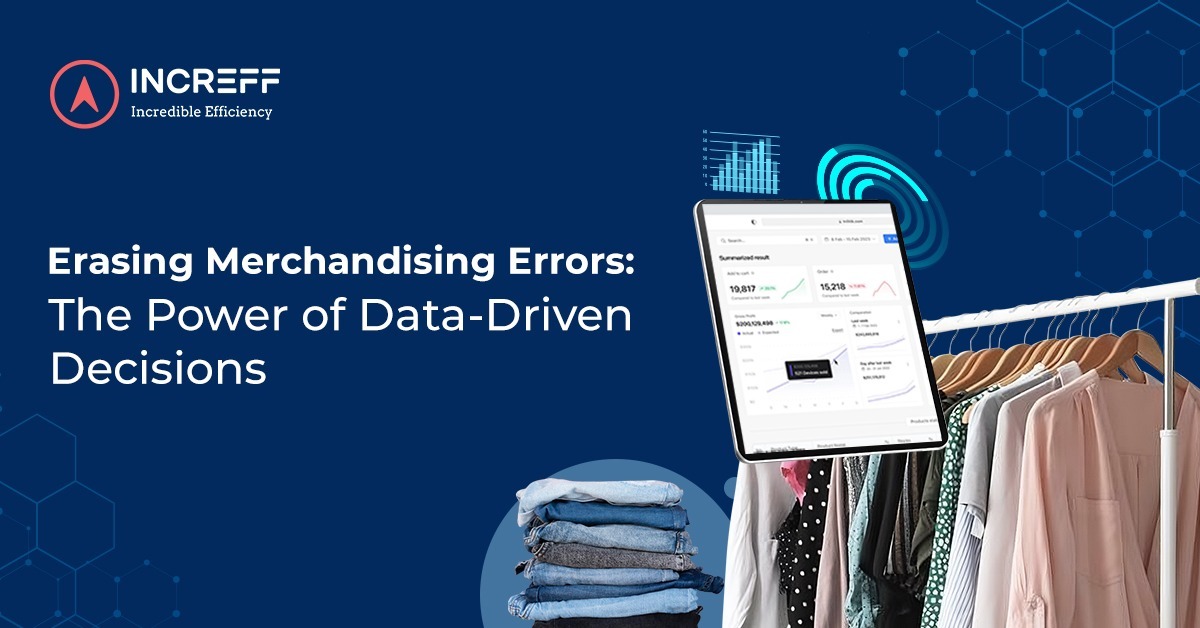
SSmart Merchandising
Erasing Merchandising Errors: The Power of Data-Driven Decisions
In the world of retail, a single merchandising decision can influence the trajectory of a season, the success of a product, and even the overall growth of a business. However, these crucial decisions can be fraught with inaccuracies and bias if not properly informed. This is where the power of data comes into play, acting as the lantern in the dark maze of merchandise decision-making.
The Old vs. The New: The Shift to Data-Driven Merchandising
Traditionally, merchandising decisions have often relied heavily on human intuition and experience. While these elements certainly have their place, they can also lead to inconsistencies and inaccuracies, which can impact overall business performance. The data-driven approach, on the other hand, eliminates much of the guesswork and subjectivity involved, enabling retailers to make more accurate, effective, and efficient decisions. Let’s explore how the mighty force of data can be harnessed to dispel errors and inefficiencies across the spectrum of merchandising operations.
Planning: The Blueprint of Success
Merchandise planning sets the stage for a successful retail operation. It’s about accurately predicting what products will sell, when, and in what quantities. With a data-driven approach, businesses can delve into historical sales data, current market trends, and customer behavior to create precise, effective merchandise plans. Data-driven approach can further fine-tune these plans, minimizing the risk of over or under-stocking. It also enables merchandisers and planners to optimize inventory mix at stores level, with the computational power to go up to a granularity of design-level attributes of styles.
Buying: The Art of Selection
Making informed choices in buying is essential, involving not only what to buy but also how much. Retailers can utilize data analytics to examine customer buying patterns, preferences, and trends. This data-driven approach identifies potential bestsellers and underperforming products, enhancing assortment mix and reducing excess stock.
To ensure optimal decision-making, retailers should perform comprehensive computations considering key attributes. Additionally, data helps identify both top-selling products and Never-out-of-stock items (NOOS) to adjust assortment mix effectively and capitalize on emerging trends.
Allocation: Every Store’s Perfect Match
Allocating merchandise across various stores is a complex task, especially for retailers with a vast network. Each store serves a different demographic, and understanding these nuances is critical. Data analytics can provide insights into regional sales patterns, individual store performance, and customer preferences, helping retailers to distribute the right products to the right stores, eliminating wastage and maximizing sales.
Replenishment: Never Missing a Beat
In the retail world, an empty shelf is a missed opportunity. Predictive analytics and real-time data can ensure that these opportunities are never missed. By monitoring sales data and inventory levels, a data-driven system can trigger timely replenishments, ensuring that key sizes are not missing and keeping customers satisfied. Further, data helps identify slow-moving inventory, allowing for pullbacks to the warehouse and replacement with more promising items.
Additionally, allows retailers to curate collections of styles that are best displayed together and dispatch them to the appropriate stores. By maintaining different replenishment quantities based on style performance, retailers ensure efficient inventory management.
Inter-Store Transfers: A Balancing Act
At the end of season, Inter-store transfers are often necessary to balance inventory and meet local demand. Here, too, data plays a vital role. It can help identify which stores have excess stock of non-performers and which ones are running low on top sellers and key sizes, facilitating smart, efficient transfers that optimize inventory across the network.
Markdowns and Discounting: The Science of Sale
Markdowns and discounting are necessary evils in retail. However, they need to be strategic to protect profit margins. Data analytics can help identify the optimal timing and degree of markdowns based on product performance, inventory levels, and sales velocity. Moreover, personalized discounting strategies can be developed using customer data, ensuring that promotions resonate with shoppers and drive sales without significantly eroding profits.
Concluding Thoughts: Embrace the Power of Data
In an era of increasing competition and ever-changing consumer preferences, accurate merchandising decisions are more critical than ever. A data-driven approach provides the accuracy, agility, and insight required to navigate the complex landscape of modern retail.
By leveraging data, retailers can eliminate inaccuracies, bias, and guesswork from their merchandising decisions, resulting in optimized inventories, improved customer satisfaction, and healthier bottom lines. The future of retail is here, and it’s powered by data. Embrace the change and let data light your path to retail success.
How Increff helps?
Increff’s algorithmic-driven merchandising software redefines the paradigm of end-to-end merchandising processes. It equips planners, buyers, and merchandisers with insights to make informed decisions regarding inventory purchase, timing, quantity, placement, and markdowns during both pre-season and in-season periods. Uniquely tailored for fashion and lifestyle businesses, it features 100+ customizable, patent-pending algorithms which empower businesses to grow sustainably and profitably.
The software’s accuracy and efficiency lead to substantial improvements in various operational metrics.
- Drastically cuts down 70% of man-hours spent in number crunching
- Allows decisions to be made 4X faster.
- Strategic inventory management results in a 1.5X increase in inventory turns and a 20% reduction in inventory holding.
- Helps businesses increase their full-price sell-through by 15%, enhancing the bottom line and margins by 4-5%.
- Optimizes supply chain processes, saving up to 10% in logistics cost.
Increff’s Merchandising Software is, therefore, a game-changer for the industry, driving both operational efficiency and profitability. Click here to learn more about Increff Merchandising Software.
24 May, 2023
RRegional Utilization
Riding the E-commerce Wave: Prepping for Peak Season…
The holiday season is the busiest time of the year for e-commerce brands. With the…
30 October, 2023
6 months agoSSmart Merchandising
Mastering Demand Forecasting: A Comprehensive 7-Step Roadmap to…
Amazon, the massive online retailer, rakes in significant profits in North America because numerous local…
25 September, 2023
7 months agoSSmart Merchandising
Top 5 Merchandising Solutions: Global Leaders in Enabling…
Have you ever considered the intricacies of managing a fashion brand across both retail and…
5 September, 2023
8 months ago



